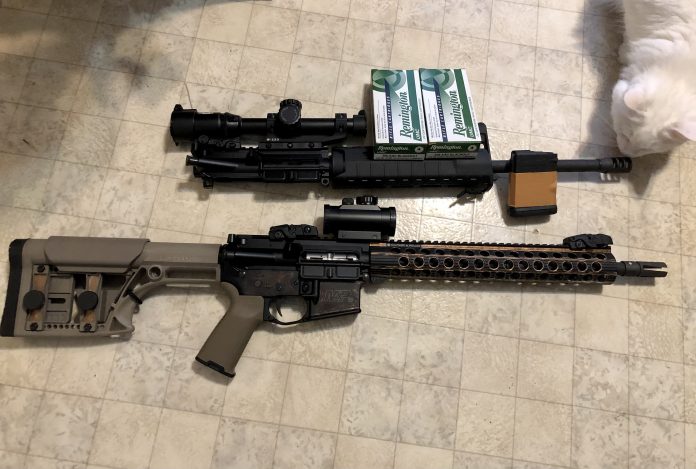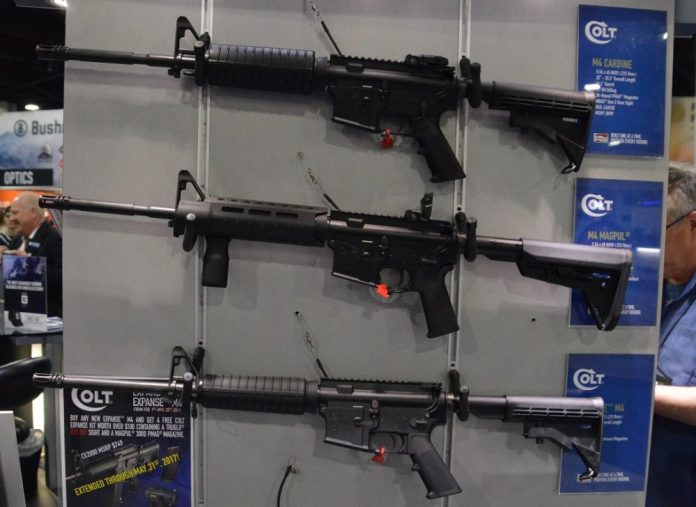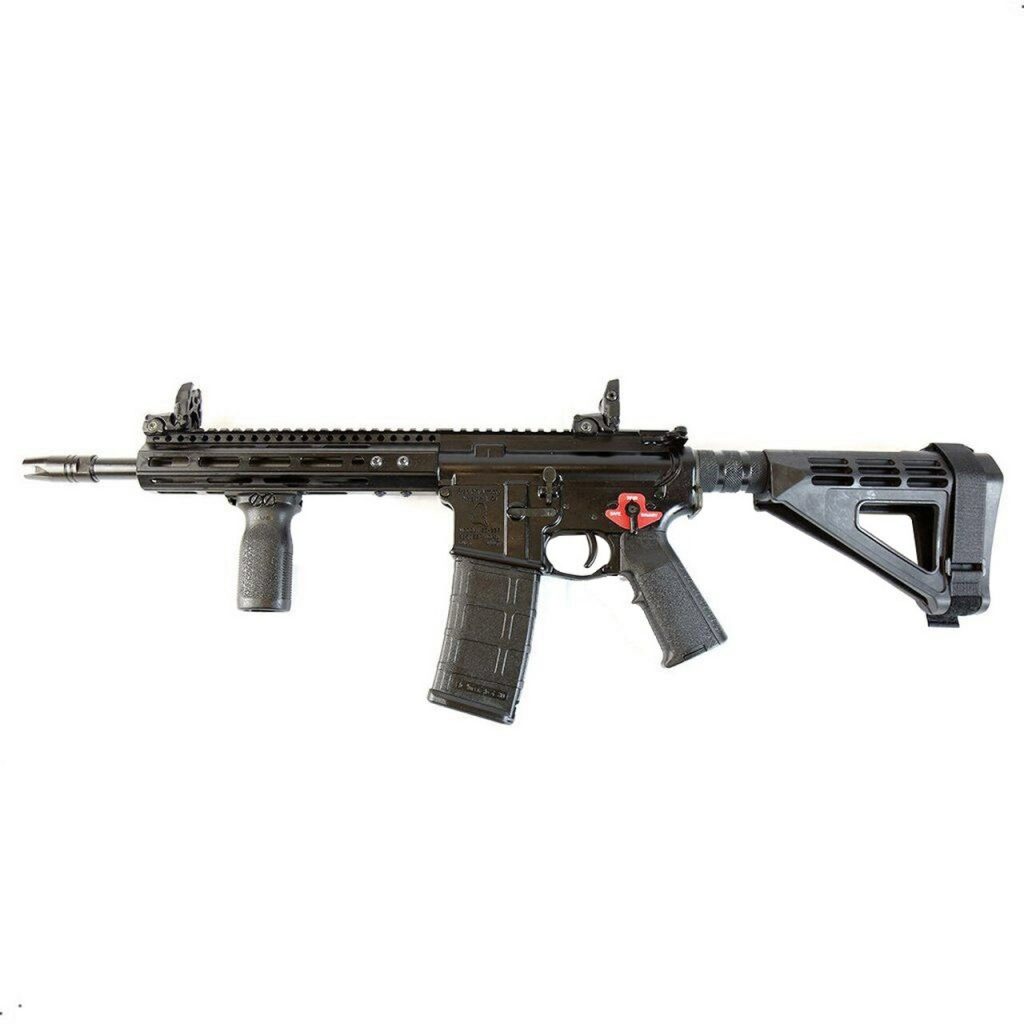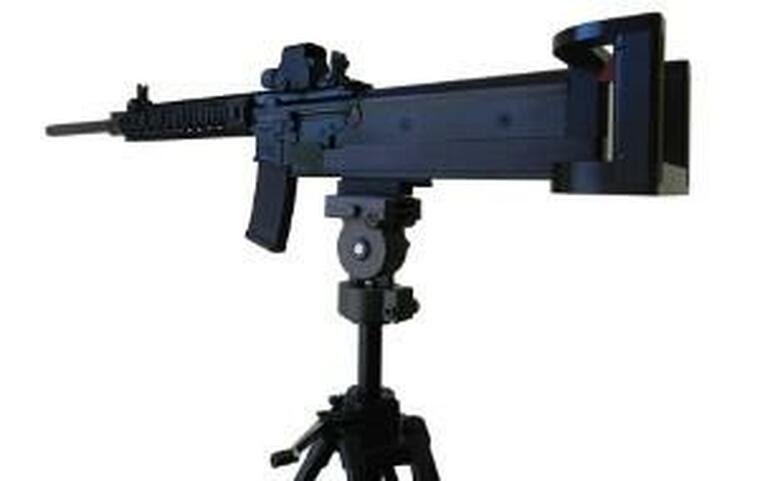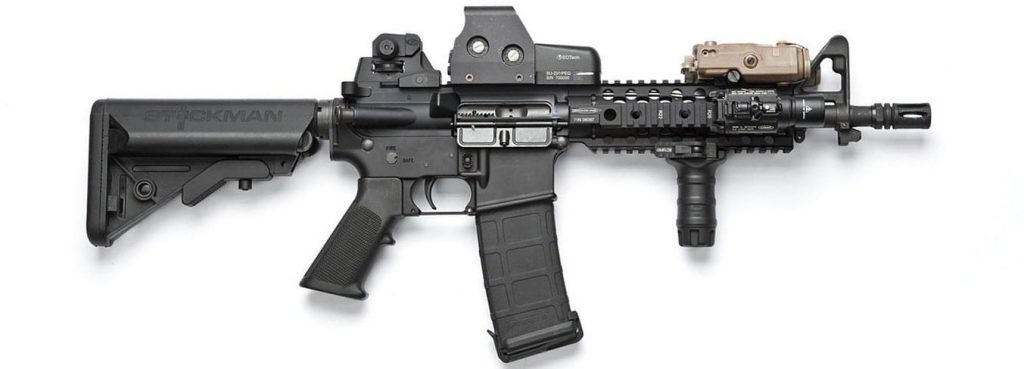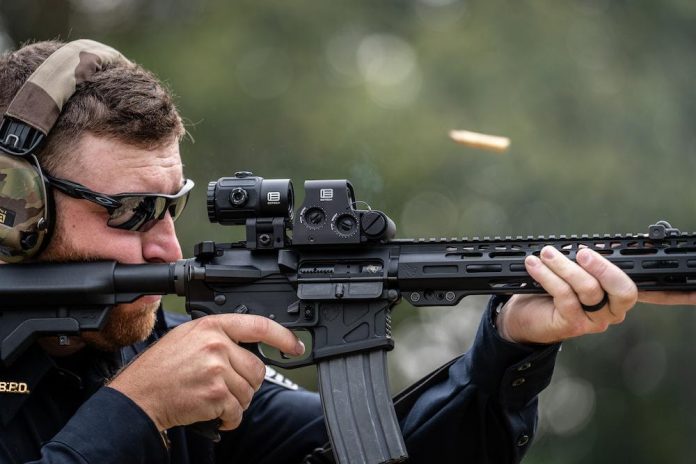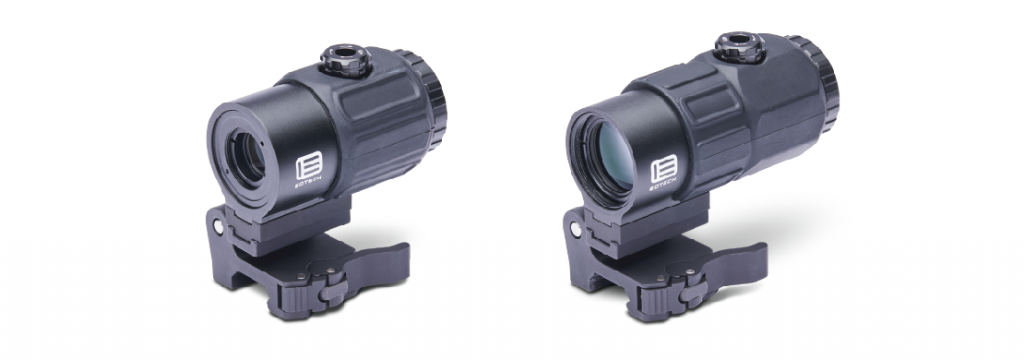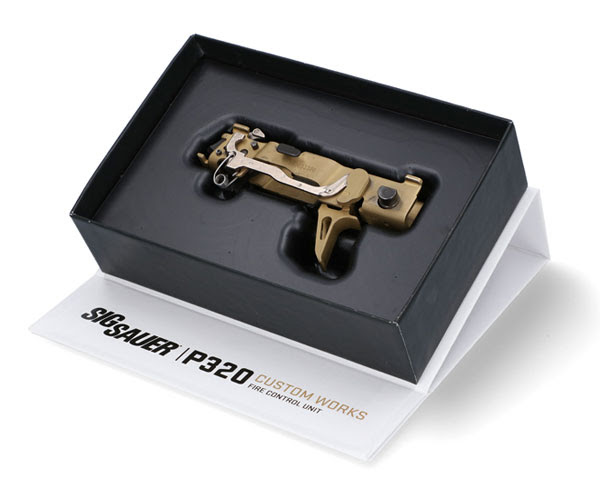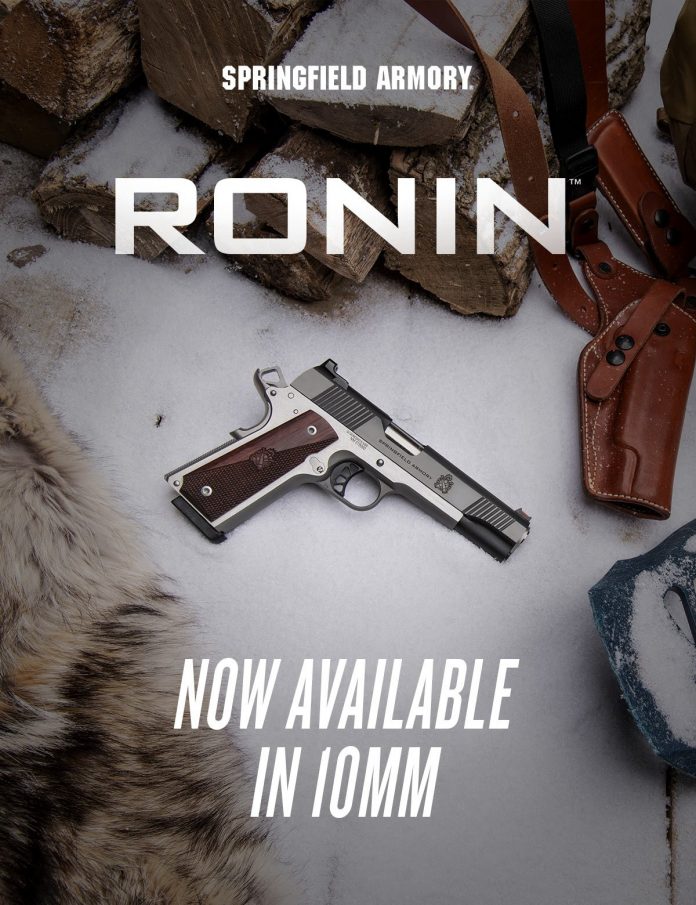I dragged my nearly ten year-old “Learner” AR out of the safe this week and took it to sight-in at the range. The reasons for this are convoluted. Allow me to explain.
First of all, with deer rifle season approaching, recall that the family property that I have hunted previously is across state lines.
There is a new edict from his majesty the state governor that visitors to that state need a negative COVID test to go there. Now, if I were going to simply go and sit in the woods by myself and then return home I truly wouldn’t worry about it. I sincerely doubt that any game wardens are going to ask to see my test results. But it’s a five hour round trip to the property and back. I don’t think I’ve ever made that trip without needing a coffee stop (or a coffee-offloading stop). That would require people contact – at least minimally.
Beyond the governmental overreach, I’m just not feeling the five hour round trip this year. If I want a full day in the woods, that travel time makes things onerous unless I get a hotel room and stay overnight. In which case I would have even more human contact and would thus feel even more obligation to get COVID tested – because we are still seeing patients face-to-face in the office, and who knows if I saw someone who was asymptomatic or pre-symptomatic? Except the testing site lines have been running down the street and around the corner for the past week. Thus, testing is not an easy thing to accomplish currently. (No, we don’t have testing in my own office)
So I said screw it – I’ll stay home and try state game lands outside town instead. Except that this was an unexpected last minute decision, so I haven’t put up a blind and will likely be just moving around and sitting on a stool periodically. It’s sort of hunting via walkabout. But honestly I have seen more deer over the years on walkabout than I have the few times I sat in a designated blind. This is how my family hunts, and I get bored in a blind anyway.
I love the Aero Precision .308 I built last year, and while it’s fantastic for a stationary blind-hunt (the meat in my freezer confirms this), it’s a little heavy for walkabout hunting.
So I decided to take my “Learner” AR out of the safe. It’s a bit of a shape-shifter, because before more recent purchases it was my jack-of-all-trades AR that I used for everything.
Allow me to go over the sequence of events in my AR history…
I attended my first Babes With Bullets rifle camp in Spring 2011. I had been shooting a handgun for two years at that point. That camp hooked me into wanting an AR of my own, so I started researching, asking for advice, and looking around as soon as I got home. Bear in mind that the so-called Assault Weapons Ban had been allowed to sunset in 2004, so there was seven years’ worth of new offerings to wade through, but not nearly the choices there are now.
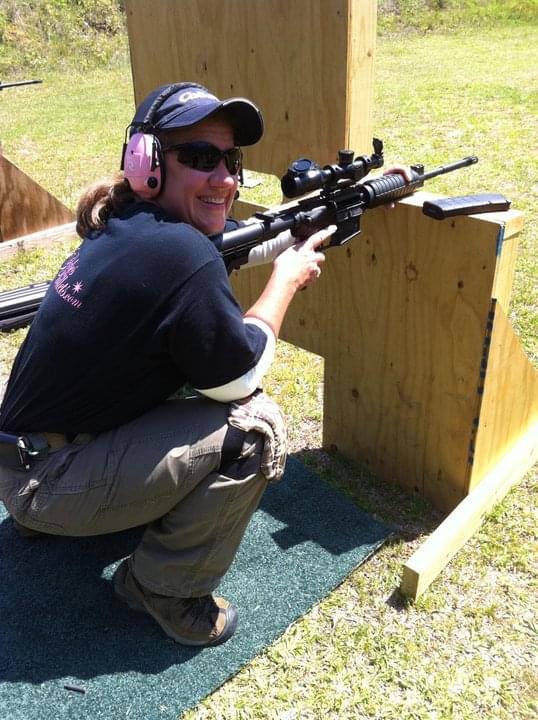
I ultimately settled on an S&W M&P15 TS. That was my first AR, and the one that got me started in 3-Gun. A couple years later I won a rifle in a raffle to use for 3-Gun, so my M&P became my learner gun in a different way. It became the gun that I learned to do modifications on.
I played with colorizing the stamping with nail polish – first one color, then another. Then I learned how to swap out the pistol grip at my kitchen table. Then I learned how to change the factory stock for one that I had won from a match prize table. Then I learned how to install a drop-in trigger group.
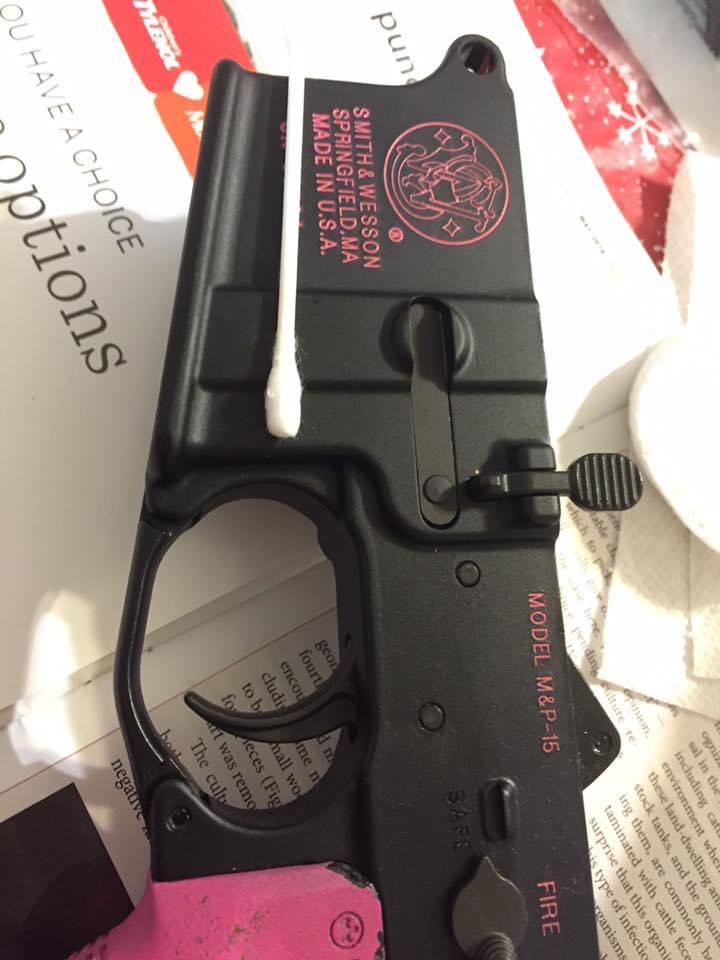
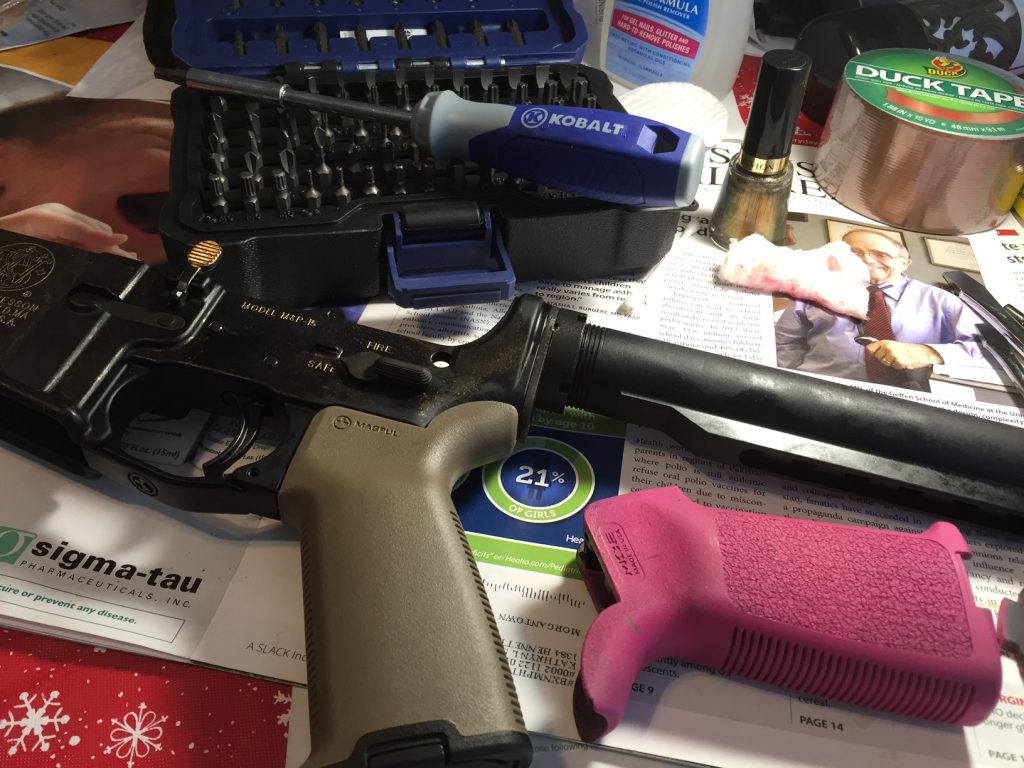
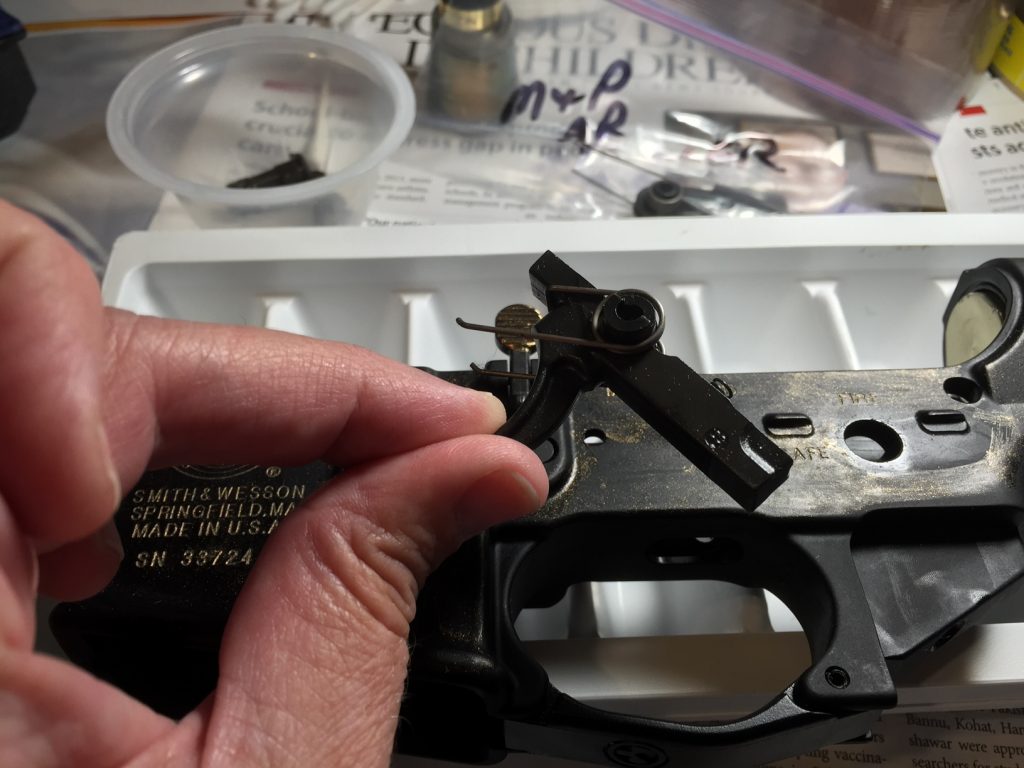
After all that work, I wanted to shoot her some more, so I got a 22 adapter from CMMG and used my M&P to shoot rimfire steel matches for a couple seasons. That was a ton of fun and allowed my baby to not sit lonely in the safe.
Then one day I got the itch to shoot a larger caliber. I found out that .300BLK could still use a standard AR lower and magazines. Nowadays there are dedicated .300 BLK magazines, but at the time I was looking for as much versatility and dual use as possible. Not feeling brave enough to build an entire upper yet at the time, I ordered one from Stag arms.
There was a bit of a saga with the delivery of said upper. Suffice to say that it involved the UPS dispatcher giving me the driver’s cell# and me chasing the Big Brown Truck of (un)Happiness down country lanes at dusk in the rain on a Friday evening. The only thing missing was the “Yackety Sax” soundtrack from Benny Hill.
Alas after all that drama, the state where family property is located doesn’t allow semi-auto for deer, so this .300 BLK upper from Stag has never gotten to stretch its legs in the field. My Aero has been blooded in Texas – but this gun has not.
So I took my first AR friend to the range to sight her in this week. She didn’t need it even though the upper had been removed and put back on again. The Nikon 1-4 (my first 3-Gun scope) was still good enough at 100 yards for a kill shot. Five rounds and I was done. I am not a precision kind of gal. If it’s good enough for several hits in the heart/lung zone off hand I am happy.
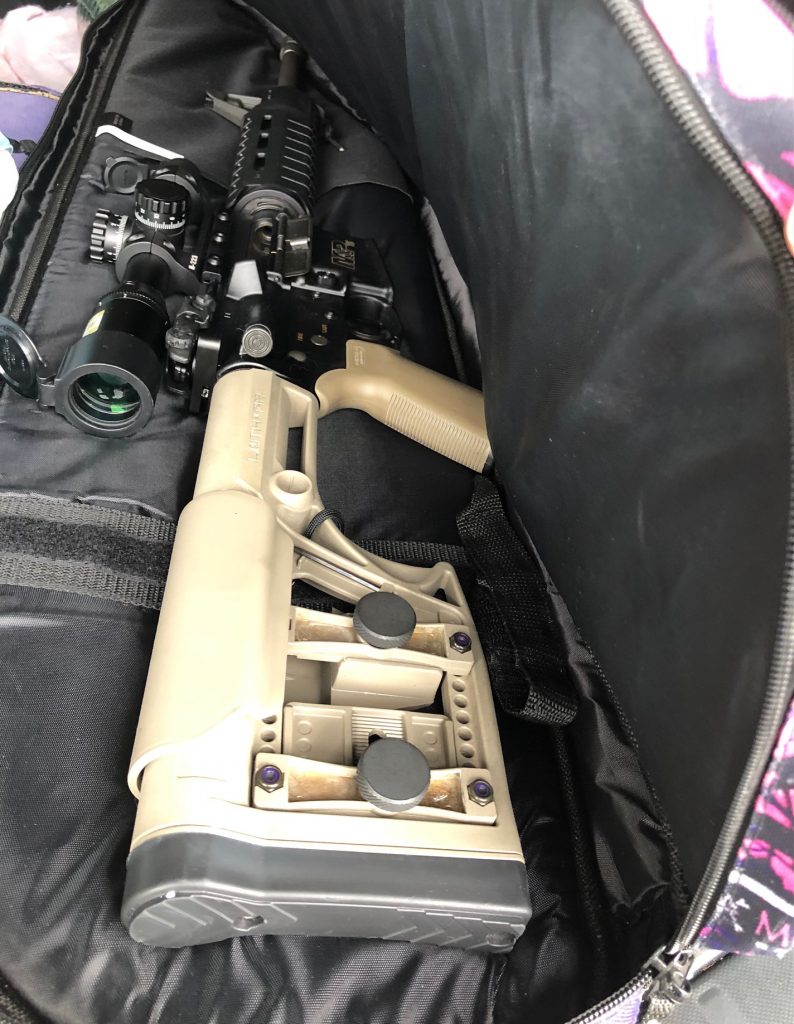
The upside to staying at home to hunt this year is that my state DOES allow semi-auto -including AR platform – for big game. In fact, I “could” legally use 5.56 for hunting here, but I just don’t want to do that. In addition, my state has easier regs for antlerless tags and very little in the way of antler restrictions. The huge drawback from my perspective is that I am limited to public game lands and I am a female hunting alone. Maybe that shouldn’t be an impediment, but I have allowed it to be in the past.
Nonetheless, I’m going to do it anyway. There are two tracts of Wildlife Management Area that I have looked at in the past that are only about a 20 minute drive away, so I am going to try. I haven’t scouted enough to set up a blind, so I’m going to look at it as a walk in the woods with a gun and we’ll see what happens. If nothing else I’ll get some fresh air and my learner gun will get some much deserved field time. I think we both need a breather in the woods, whether we get to actually shoot or not. That’s the plan – we’ll see what happens.

